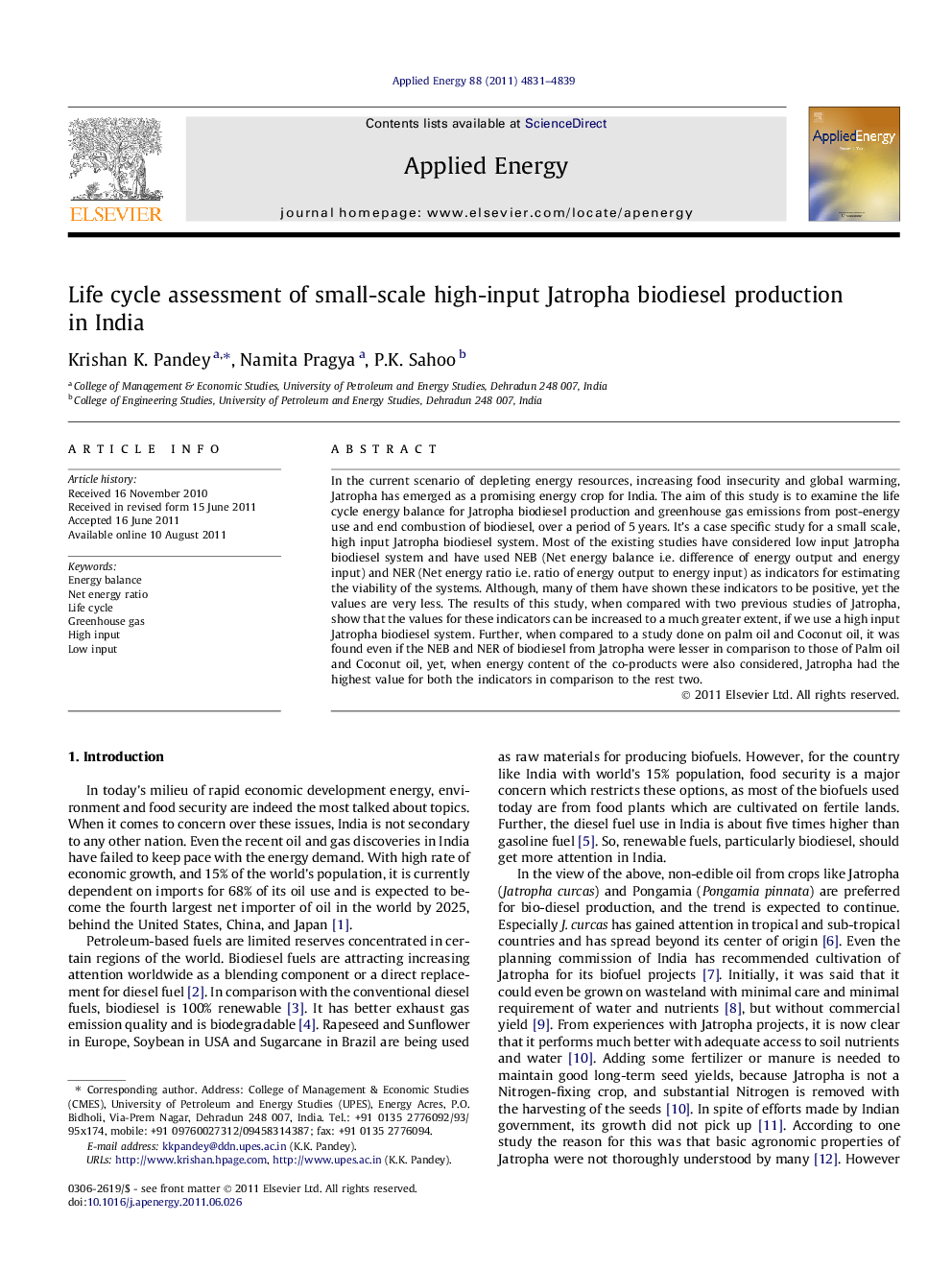| Article ID | Journal | Published Year | Pages | File Type |
|---|---|---|---|---|
| 244005 | Applied Energy | 2011 | 9 Pages |
In the current scenario of depleting energy resources, increasing food insecurity and global warming, Jatropha has emerged as a promising energy crop for India. The aim of this study is to examine the life cycle energy balance for Jatropha biodiesel production and greenhouse gas emissions from post-energy use and end combustion of biodiesel, over a period of 5 years. It’s a case specific study for a small scale, high input Jatropha biodiesel system. Most of the existing studies have considered low input Jatropha biodiesel system and have used NEB (Net energy balance i.e. difference of energy output and energy input) and NER (Net energy ratio i.e. ratio of energy output to energy input) as indicators for estimating the viability of the systems. Although, many of them have shown these indicators to be positive, yet the values are very less. The results of this study, when compared with two previous studies of Jatropha, show that the values for these indicators can be increased to a much greater extent, if we use a high input Jatropha biodiesel system. Further, when compared to a study done on palm oil and Coconut oil, it was found even if the NEB and NER of biodiesel from Jatropha were lesser in comparison to those of Palm oil and Coconut oil, yet, when energy content of the co-products were also considered, Jatropha had the highest value for both the indicators in comparison to the rest two.
► NEB and NER of high input Jatropha biodiesel system was higher than those of low input. ► These values further increase on including the energy content of the co-products, and in the further years. ► Maximum energy use was during oil extraction, followed by oil processing and fertilizer use. ► Allocation of resources at right time and with proper care increase the overall system productivity.
